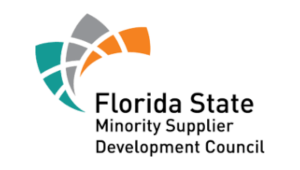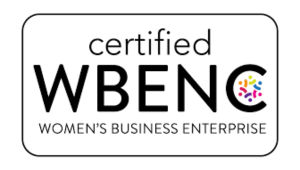In my last Blog post The Overwhelming Business Case For Workplace DEI I shared some of the compelling research that shows significant correlations between diverse and inclusive workplaces and better business outcomes. McKinsey notes that “diverse and inclusive companies are better able to attract top talent; to improve their customer orientation, employee satisfaction, and decision-making; and to secure their license to operate” and, in most cases, improve their financial performance.
The key audience for the diversity, equity, and inclusion (DEI) business case is the company CEO and Board of Directors. In a global study by Russell Reynolds Associates, top directors and senior execs highlighted the CEO’s and board leader’s roles in driving genuine DEI in the workplace. The study found that companies can only achieve real change if:
- Leader’s role modeled the ideal culture by ensuring a diverse and inclusive boardroom, and boardroom and including critical issues on the board agenda.
- The CEO and board chairperson were aligned on DEI issues and embedded them into the business strategy.
- The CEO ensured they delivered tangible results, like meeting DEI targets across the business.
CEO Action for Diversity & Inclusion™ is the largest CEO-driven business commitment to advance diversity and inclusion in the workplace. More than 2,000 CEOs and Presidents have pledged to ACT ON supporting a more inclusive workplace for employees, communities, and society at large. The big question is – if CEOs set the course for corporate priorities, values and intentions, will the rest of the organization follow suit? CEOs have powerful leverage to drive organizational change — if they choose to use it. On the issue of workplace diversity, equity, and inclusion, corporate leadership so far has been a mixed bag. Despite the right words and intentions, progress has been slow.
The CEO Role: Leading DEI From The Top
- Effective communication of the CEO’s personal expectations throughout the organization is critically important. The most effective process for cultural change starts at the top. By looking at the behaviors encouraged (or discouraged) by top executives, employees gain the greatest sense of the company’s commitment to any strategic initiative.
- Without clear communication flowing between the CEO through all leadership levels and employees, the importance of having a diverse, equitable, and inclusive environment will not be understood. Since implementing a DEI strategy entails change, effective communication is necessary to both provide information to and encourage participation from all employees. It is up to the C-level executives to clearly articulate the company’s values, goals, and strategic vision so that all employees understand their roles in the execution process.
As part of the DEI communication strategy, I recommend that the CEO articulates:
- Why the strategy makes good business sense
- How DEI will move the company beyond where it is today
- How it aligns with the company’s values.
By giving employees reasons to believe in the DEI strategy, leaders increase the likelihood of winning support. Moreover, by involving employees in processes that help identify the need for improvement, employees can become encouraged to take actions that benefit the company. The most effective DEI communication strategies are inspirational while reinforcing the company’s commitment to DEI as a core value.
IBM CEO’s Global Commitment to Diversity, Equity, and Inclusion
I admire and have followed Virginia M. (Ginni) Rometty the former Chairman, President, and Chief Executive Officer of IBM for several years and use her as a CEO role model for DEI in my training and executive coaching initiatives. Ginni became CEO of IBM in 2012 and retired from the company on December 31, 2020, several months following the global protests over the unjust death of George Floyd:
“IBM thinks about diversity the way we think about innovation—both are essential to the success of our business. When we innovate, technology becomes smarter for clients and creates new opportunities for growth. When we incorporate diversity into our business, we create better innovations and outcomes. IBM has embraced diversity, and it gives opportunities for IBMers and our clients to achieve their full potential.” – Virginia M. Rometty, Chairman, President and Chief Executive Officer
The Board of Directors – Change Starts with the Chairperson
Boards play an integral role in leading their companies through business and social change in ways that promote sustainability, performance and value. Boards can take steps to better influence and lead their companies in strategically and systemically addressing the societal and performance drivers for DEI. As the decision-making body at the highest level of organizational leadership, boards play a critical role in creating an organization that prioritizes, supports, and invests in diversity, inclusion, and equity.
As board leaders, chairpersons can model an ideal culture within the boardroom by:
- Ensuring that the board itself is diverse, including women, minorities and diverse points of view; engaging in creative efforts to build the board candidate pipeline; and eliminating bias from the ideal director profile.
- Creating an inclusive boardroom environment that fully harnesses the benefits of a diverse board and encouraging all board members to contribute and constructively challenge assumptions and perspectives.
- Setting the tone that D&I is important to the organization by keeping it on the board agenda, asking the right questions and monitoring the relevant data. Chairs and boards can and do have a direct impact on the success of D&I within the organizations they serve.
A Partnership Between the Chairperson and CEO is Essential
Within organizations that lead the way on DEI, the chair and CEO are aligned on the importance of the topic. Together they:
- Embed D&I into the organization’s strategy and empower the business to prioritize the topic alongside other business KPIs and objectives.
- Make a shared commitment to role-model purposeful, authentic and inclusive leadership for the rest of the organization.
The CEO Delivers DEI Results
While the chair and CEO can partner on tone-setting and making DEI a strategic priority, and the Chief Human Resources Officer (CHRO) and/or Chief Diversity Officer (CDO) have leadership responsibilities, for execution, it is ultimately the CEO’s role to deliver results. The best CEOs:
- Gather data and set targets to ensure diversity across the business. This means going deep into the data around hiring and promotion decisions at all levels across the firm, analyzing roadblocks and being transparent about success and failure in meeting targets.
- Put structures and policies into place that encourage inclusive working environments and that provide diverse talent with the support systems they need to be successful within the organization.
- Coach and mentor leaders with the recognition that diverse teams require different management skills than homogenous ones do.
If you are the cultural change agent presenting the DEI business case to the CEO and/or Board Chair, here are some tips:
CEO/Chair DEI Commitment-Related Questions to Consider
- Who are your natural champions? Has your CEO or any senior leader been expressly supportive of DEI initiatives in the past?
- What initiatives or change efforts at your organization have been highly successful?
- In what ways did senior leadership support those initiatives? What strategies were employed at the outset of those initiatives to garner executive commitment?
- Who can you reasonably expect to resist the DEI message? (Keep in mind that a certain amount of resistance is healthy and will eventually improve the quality of your DEI strategy).
CEO/Chair DEI Commitment-Related Action Steps
- Prior to meeting with the CEO or senior leader, research that individual’s evidence of commitment to DEI via company articles, blogs, web presence, etc.
- Know your company’s diversity and equity demographics as a percentage of the general population and senior levels of the company.
- Prepare a working “elevator speech” of the general business case for DEI.
- Describe the specific actions you would like your CEO/senior leaders to take in the first three months of your strategic DEI management plan. These actions should, at a minimum, include participating in the creation of your vision, mission and strategy, and a commitment to put his or her name to all company-wide communication about the new plan.
- Be prepared to speak about the business and values cases of DEI. The business case is essential if the work is to move forward, but certain individuals are naturally enthusiastic about DEI and will want to know that their DEI leaders value and share that passion.
“Commitment is what transforms a promise into a reality. – Abraham Lincoln
 As CEO and Principal Consultant of Inclusive Leaders Group, LLC, Charlotte Hughes MS, CDP, SHRBP, CPLP brings a diverse background as an accomplished Workforce and Organizational Development and Diversity & Inclusion global thought leader and practitioner for several major Fortune 100 companies and one of the largest health systems in the U.S. Charlotte delivers more than 60 speeches and facilitates roughly the same number of training workshops each year.
As CEO and Principal Consultant of Inclusive Leaders Group, LLC, Charlotte Hughes MS, CDP, SHRBP, CPLP brings a diverse background as an accomplished Workforce and Organizational Development and Diversity & Inclusion global thought leader and practitioner for several major Fortune 100 companies and one of the largest health systems in the U.S. Charlotte delivers more than 60 speeches and facilitates roughly the same number of training workshops each year.








